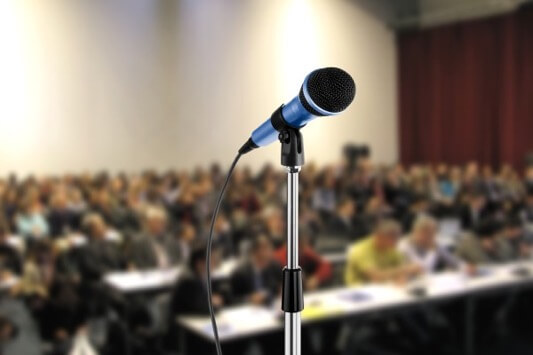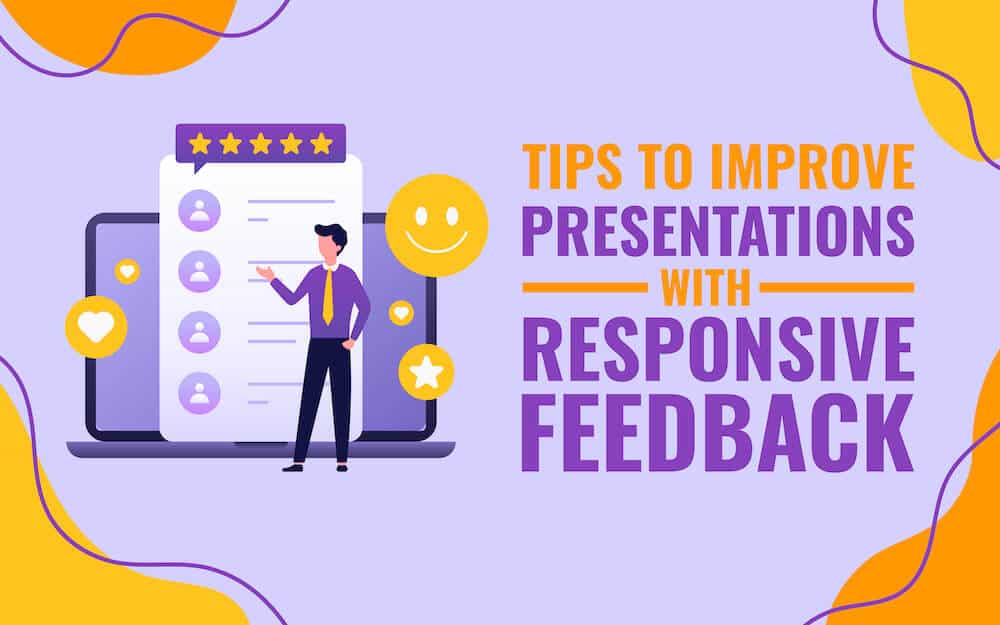
You’ve studied hard, achieved expertise in your field, and are building a solid reputation for yourself and your innovative ideas.
The one thing you haven’t done is achieved a comfort level in public speaking.
Now you’ve been asked to be a presenter at an upcoming event. You want to do it to advance your ideas, you know it is an honor to be asked, but all you can think about is that you may fail miserably as a presenter.
Here are some ideas on how to make your public speaking debut successfully with examples to illustrate these techniques in action.
First, here are some preliminary guidelines to get you past the presentation panic.
Focus first on what you want to say
Spend as much time as you need to write a draft of your presentation, paying attention to the points you want to make and the way you plan to support those ideas. It’s a good idea to have your presentation written at least three weeks before the date you are to deliver it so you will have lots of time to get really comfortable with it.
Go over your written copy and look for any terms that are jargon that is terms specific to your industry. After each industry specific term, include a simple explanation that someone outside of your area of expertise would understand.
Read and time your presentation in this early stage to ensure that you are coming in just under, not over, the allotted time. If you have been asked to speak for between 15 and 20 minutes, the normal time for a keynote address or conference presentation, you should have approximately five to seven typewritten double-spaced pages.
Now that you have the basics ready, here are some ways to add the sparkle that will make you sound like a professional presenter.
Grab your audience’s attention with a clever opener
A common mistake first-time presenters make is to admit to the audience that they are doing it for the first time, or even that they are not used to speaking so you hope they will forgive you any mix-ups. Some will, but most won’t. Never apologize for being you. You were invited and they came to hear what you had to say. Don’t humble yourself; it is not becoming to your talent.
Don’t try to build a bond with your audience by noting that they are busy people and you appreciate that they took time out of their busy schedule to listen to you. That will prompt at least three-quarters of them to start wondering just why they are doing that and to consider all the busy tasks awaiting them.
Finally, don’t treat this presentation like it is a high school essay and open just with a quote from some dead or far-away sage. It’s not the worst thing you could do, but it is certainly not the best thing either.
So how do you grab your audience from the start? There are two effective ways.
One is to open with a personal story. Don’t be afraid to let a little humor aimed at yourself into the story. Make sure that your story is one that has an obvious link to your content and your key point of the presentation.
The other is to ask your audience a general question that will draw their attention to you and prompt a response.
Don’t ask something personal like: “Is anyone here divorced?” Instead, ask for a common experience, such as “has anyone here ever lost a sock in their washer or dryer?” Or “has anyone here ever gone hiking in the woods….show of hands please.”
As an example of how effective the latter technique is to open a presentation, watch this video showing Victor Antonio asking his audience the key question that relates to his whole presentation: “When was the last time you did something for the first time?” See the video here:
Study how the best of the best handled their presentations
Nothing makes you better at any skill than to learn from the masters. Fortunately there are many examples of the best orators of all time making their eloquent and passionate points available for free viewing on the Internet.
If you don’t have too much time, a good way to start is to look at the compilations of some great moments in public speaking.
A good one to start with is a video called Top 10 Most Powerful Orators in History. You can view it here:
Notice that while some are loud and forceful, others, like Mahatma Gandhi, are quiet and just as powerful. Note the different styles and what attracts you to them. Look for style points that you would feel comfortable emulating.
Use your eyes as well as your mouth to communicate
Former United States President Bill Clinton is currently one of the highest-paid public speakers in the world.
Despite the high price of tickets to his addresses, his audience leaves impressed, satisfied that their money was well spent. They talk about the points he made and how they felt in his presence.
He is one of the best presenters of all time.
What is his secret? He uses his eyes as much as his voice to reach his audience. He is masterful at locking eyes with one audience member and drawing them into his remarks in a way few others can accomplish.
As an example of how he accomplishes it, watch the video The Secret of Bill Clinton’s Charisma. You can see it here:
Dare to drop your life jacket and swim to victory
The most impressive presentation technique of all is to address your audience directly without reading your speech.
For your speaking debut, that is not to suggest that you walk out onto that stage without a note in your hand, although that would impress everyone and do it if you dare.
But at the very least, memorize chunks of your address so you can deliver them by staring straight out at your audience, not looking down at your remarks.
One tip to achieve that is to divide your speech into a series of chunks, since smaller chunks of information are easier to remember than the entire address at once.
Experts will suggest that you can partition your speech into five to nine chunks, but in the beginning, that is a lot to remember. If you can bring it down to three to five chunks, it would make more sense. In each chunk of your speech, focus on three to five bullet points, and deliver those without notes.
For an example of how this works, watch the video How to Give a Killer Presentation – With No Notes here:
Monitor your body language and use it to your advantage
Being new to the presentation stage doesn’t mean you can’t wow your audience. This is your time to pull together everything you know about the art of communication and use it.
That includes communicating with your body as much as with your voice. Practice your facial expressions in front of a mirror.
Look at how your body is positioned to your audience and whether your arms are wrapped tightly around you or spread out expansively to include others and draw them towards you.
One of the best examples of the effective use of body language comes from Dananjaya Hettiarachchi, who was the 2014 Toastmasters International World Champion.
There have been other champions since, but he remains the ultimate example of using our bodies as a communication device.
Watch him explain what he does in this video:
Using any or all of these techniques will make it easier to make your first presentation feel like a professional address.



